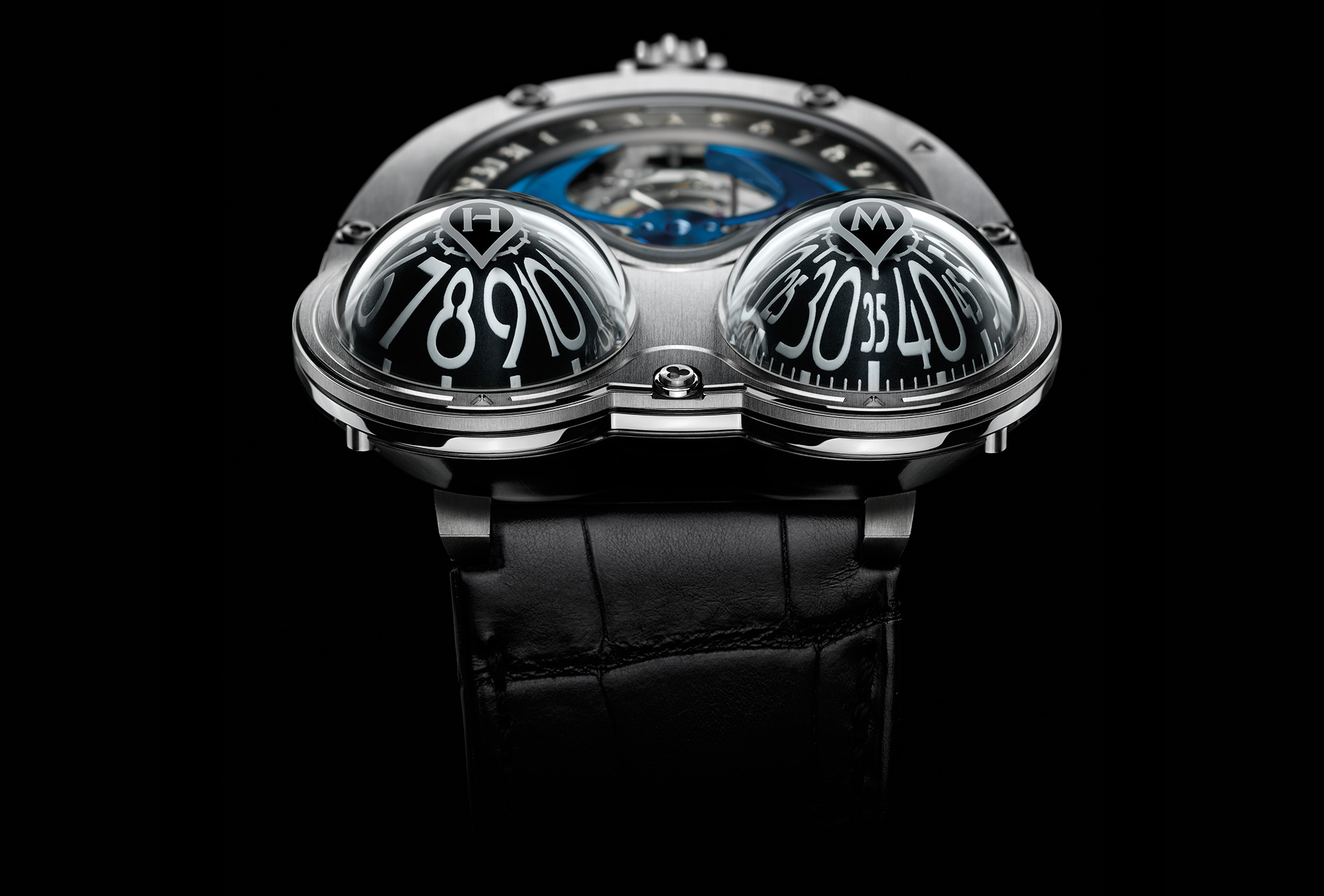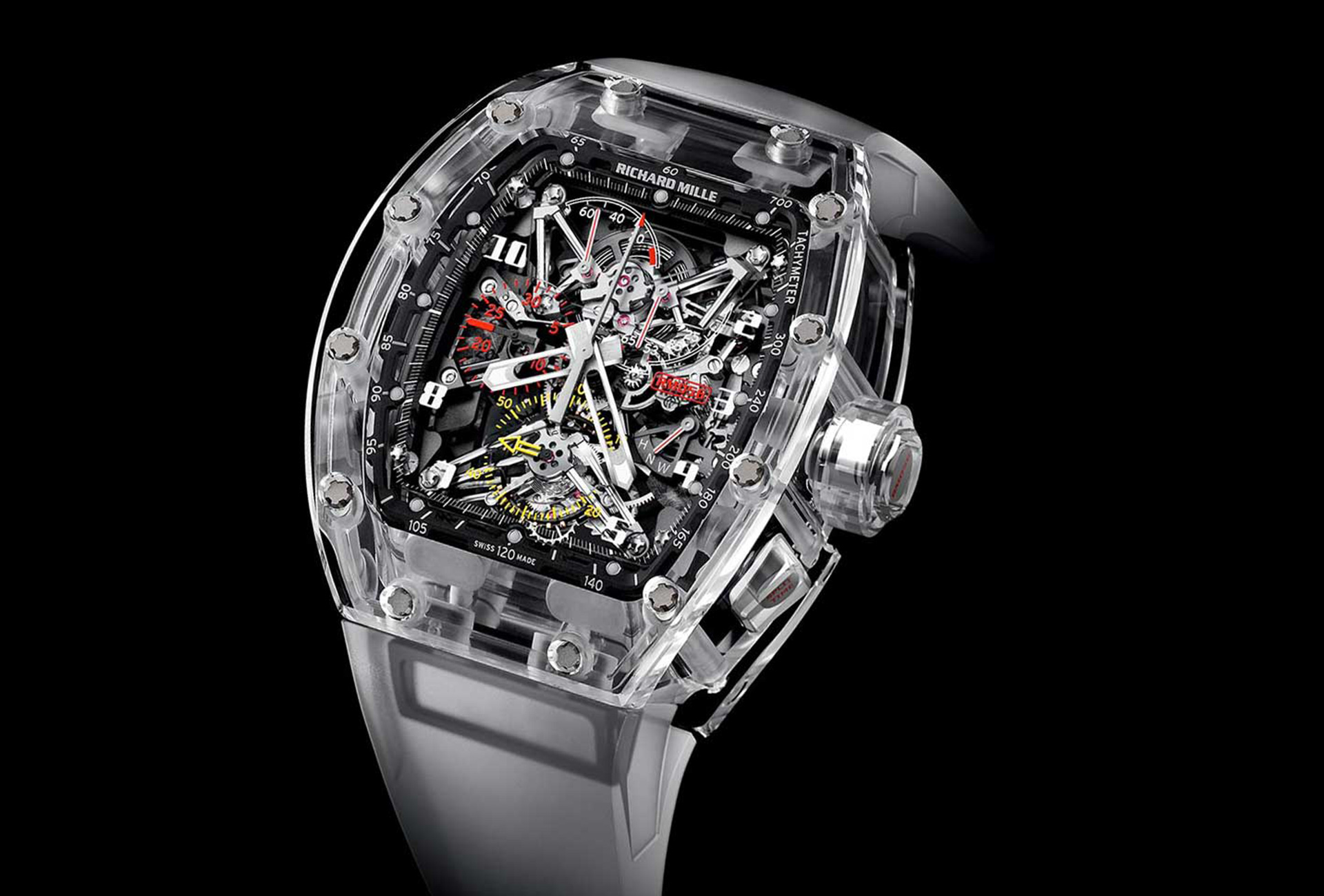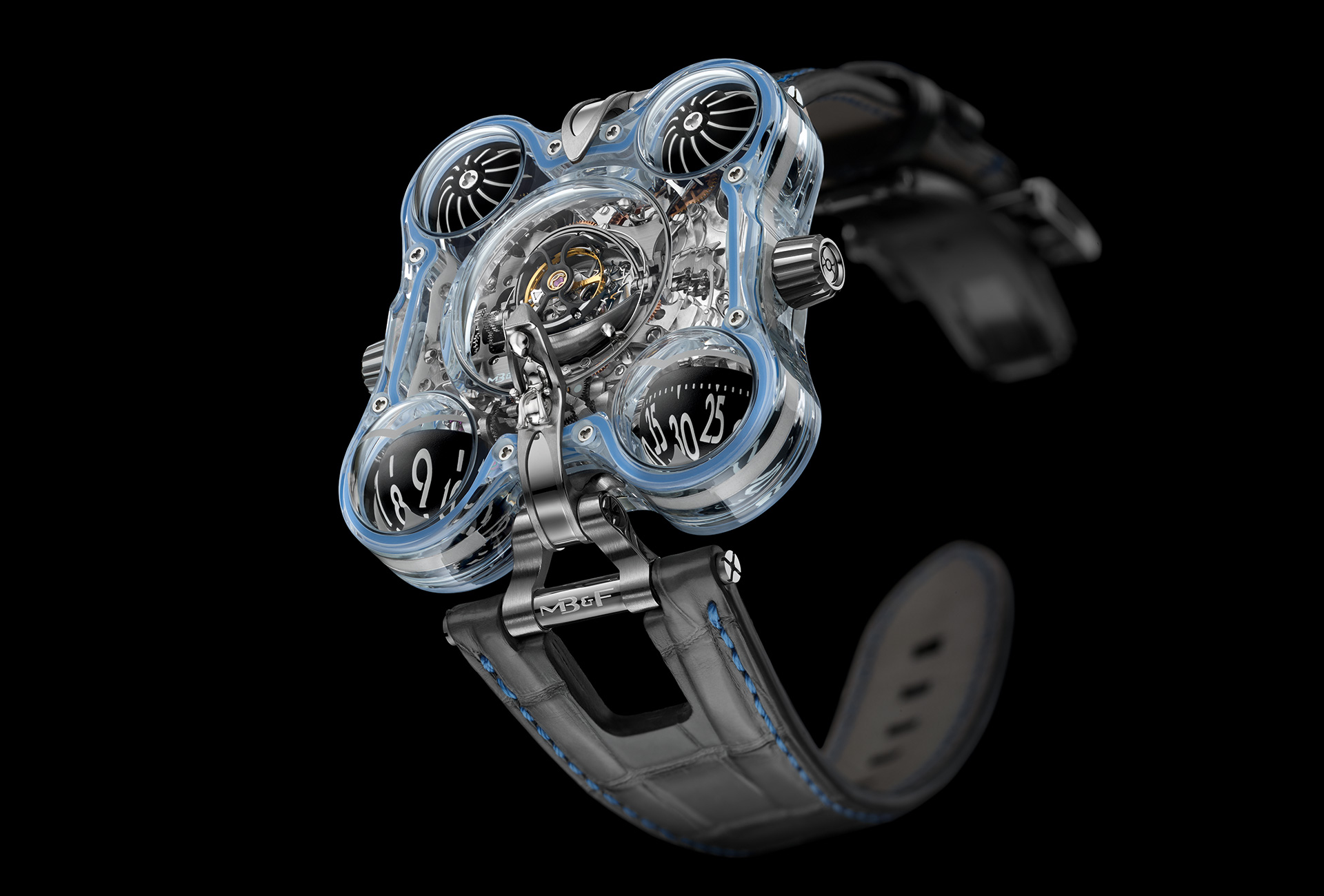Over the past decade or so, sapphire has become a more familiar sight in the composition of watches, particularly for cases in hitherto impossibly complex forms. Granted, sapphire isn’t a new material in watchmaking. The first sapphire cases appeared in the 1980s but they were a far cry from the elaborate forms that took the stage in the 2010s, being only facetted as opposed to sculpted. Most people know sapphire, a form of corundum, for its hardness – second only to diamond on the Mohs scale – and scratch-resistance. Its other properties are lightness, comparable to that of titanium, and transparency; an advantage when wanting to show off a watch’s intricate mechanisms. On the downside, sapphire is one of the most difficult materials to work with. Machining, polishing, piercing and assembly constitute a permanent challenge.
As a general rule, cases start out as blocks of opaque sapphire that are milled with diamond-coated tools (which remove powder). This is a significantly more time-consuming technique than milling metal (which removes shavings), although certain specialist manufacturers have developed sophisticated 5-axis CNC machines specifically for this purpose. Polishing, another slow process, can reveal the presence of inclusions, rendering certain pieces unfit for use. Piercing and assembly are also fraught with danger; sensitivity to pressure means the sapphire crystal can break at any moment. Production losses are to be expected in what is a slow, uncertain and, because of this, costly process. And so it stands to reason that sapphire cases remain an exclusive trend.
Who dares...
The pioneering role of Richard Mille is widely acknowledged. The RM 056, housed inside the first in-house all-sapphire case, took the industry by surprise in 2012, revealing both the movement and a wealth of possibilities which the brand continues to explore (and which this year include gem-setting). Other brands to have taken the sapphire crystal route are, notably, 4N with the Sapphire Planet (2015), Hublot and its MP-05 LaFerrari Sapphire (2016), Rebellion with the 540 Magnum Sapphire (2016), Bell & Ross and the BR-X1 Chronograph Tourbillon Sapphire (2016), Greubel Forsey’s Double Tourbillon 30° Technique Sapphire (2016), Armin Strom and the Dual Time Resonance Sapphire (2019) and Girard-Perregaux with the Quasar (2019). They present varying degrees of complexity with respect to shape and construction, ranging from single blocks to multiple parts (eight for the Rebellion), as well as the techniques used to assemble the various elements, from adhesive to brazing (by metallisation of the sapphire crystal) or screws. The most impressive achievements, however, are often the ones that fly under the radar… such as those by MB&F.
The first entirely sapphire case to see daylight at MB&F, for the Horological Machine No6 (HM6) Alien Nation, is relatively recent (2017) but the material has been hardwired into the brand’s identity since day one. A fan of kinetic art, founder Maximilian Büsser has always looked for ways to draw attention to the technical specificities of his watches. The story kicks off in 2007 with the launch of the HM1, which features imposing, figure-of-eight sapphire crystals front and back. Boundary-pushing research produced the Sapphire Vision HM2 SV in 2008 then HM6 SV in 2016. More importantly, it made it possible to create the extraordinary shapes for which MB&F designs are known.
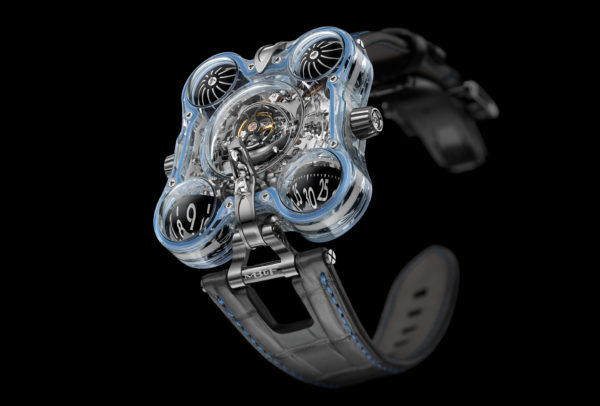
Introduced in 2010, the steeply curved domes of the HM3 Frog bring the question of transparency to the fore. For sapphire crystal to be perfectly transparent, it must be of identical thickness at all points and without the least imperfection. Any variation produces a visible magnification effect. One can imagine the difficulty inherent to attaining this ideal uniformity in such pronounced curves. The task becomes all the more delicate given that the only means of control is the human eye. At MB&F, each piece is duly scrutinised before use.
Never simple
The most problematic components are not always the most visible or spectacular. On the HM4, also released in 2010 and inspired by the A-10 Thunderbolt plane, a transparent section around the twin-pod construction allows a 360° view of part of the engine. A combination of straight lines and curves, it had to be made in a single piece. Companies worldwide declined to take up the gauntlet. It was in Switzerland that MB&F technical director Serge Kriknoff finally found the “Friend” who, after some hesitation, accepted the challenge to produce the one hundred or so pieces the brand needed for the collection.
Production of the two drop-shaped domes covering the twin balances of the HM9 in 2018 would prove an even thornier problem. The smaller the radius, the harder it is to achieve that all-important transparency. This was a whole new level. Note that the three sapphire panes on top of the HM9 display subtle differences. Those on each side have a perfectly even surface so as not to distort the view of the moving parts underneath, whereas the central pane has a convex middle section to offer a slightly enlarged view of the fixed components.
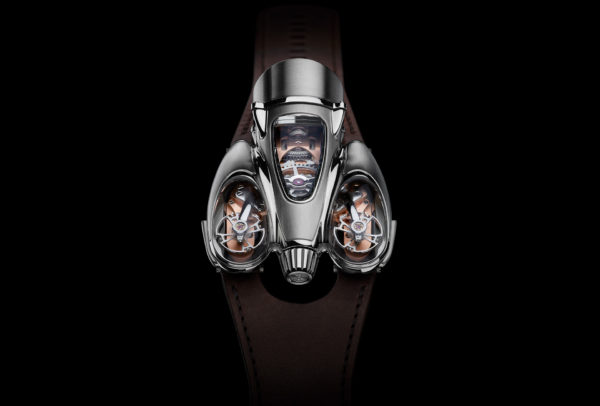
Additionally, MB&F makes use of an exclusive process for assembling sapphire components with adhesive. Like a lot of brands, it uses Asulab films but has developed a special aligning technique for optimal precision. A high-tech oven ensures complete control over the adhesive force. Thanks to this, the risk of breakage when gluing or ungluing, a factor that must be taken into account for servicing, is reduced. The HM6 Alien Nation (2017) in its entirely sapphire case concentrates all the expertise accumulated by MB&F since its creation. As well as its spectacular architecture, it set a new record with a total of 12 glued or screwed sapphire crystal parts. Production of this impressive vessel and its alien inhabitants was limited to four unique pieces.








